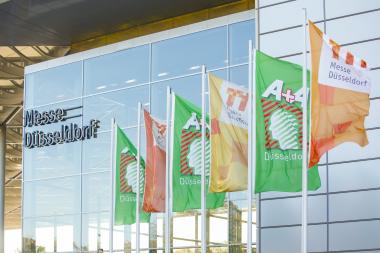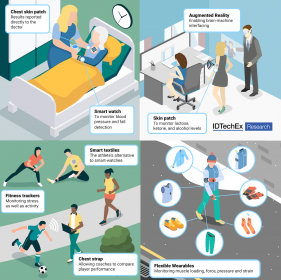WearRAcon Europe Conference to be held at A+A 2023
Under the motto “People Matter” A+A 2023, a Trade Fair for Safety, Security and Health at Work, will revolve around the most important trends of our time: sustainability and digitalisation. Here, exoskeletons also play a prominent role as tomorrow’s ergonomic tools. An important conference in this field is WearRAcon Europe which will be held at A+A from 25 – 26 October 2023 for the first time.
The Conference will be organised by the Fraunhofer Institute IPA in cooperation with the Stuttgart University and the Wearable Robotics Association (WearRA). The 38th A+A Congress, which is held by Bundesarbeitsgemeinschaft für Sicherheit und Gesundheit bei der Arbeit (German Federal Association for Occupational Safety and Health - Basi) will be closely dovetailed thematically and in terms of content with it.
Being able to walk again despite a serious injury, handle heavy parts without outside help or simply do overhead work comfortably and for extended periods of time - the advantages of exoskeletons have already convinced numerous industries. Exoskeletons and wearables are now already being used successfully in industry and commerce, and major machine builders and automakers as well as the medical sector are continuing to experiment with man-machine connections. Currently, the global market volume for exoskeletons is valued by leading analysts at over US$20 billion by 2030.1
The WearRAcon Europe Conference 2023 will provide new insights into the promising world of exoskeleton systems from different perspectives and, in conjunction with the A+A Congress, set future-oriented impulses. Lectures by renowned exoskeleton pioneers combined with testimonials presented by users from a variety of industries and keynotes by experts will round off the programme. And, like at the previous A+A, a Self-Experience Space will again be set up so that the exoskeleton systems of various manufacturers can be tested in realistic work scenarios.
In parallel with the Self-Experience Space, the large live study Exoworkathlon will also take place again. Trainees from various mechatronic training courses have to complete a concourse and perform holding, lifting and assembling tasks, which have been specially developed with the industry. Data is prospectively collected with different measuring sensors to measure the effects of exoskeletons. In the Exoworkathlon, the IPA focuses especially on prevention for young employees in order to raise awareness of the issue and counteract ailments at an early stage.
1 (Interview Trans.INFO mit Armin G. Schmidt, CEO von German Bionic (01/2021).
Messe Düsseldorf GmbH











